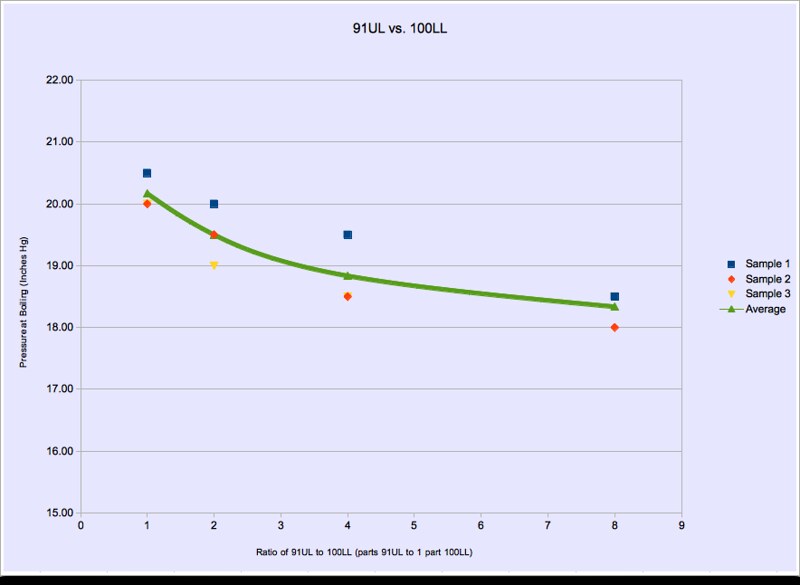I've been following this tread for a long time, even posted a couple of times. Everyone talks about autogas vapor levels and seasonal vapor level issues, as well as detonation issues. Can anyone tell me WHY this isn't an issue in the automotive domain? Has your car (with 10/1 compression levels) even experienced these problems? What have the automotive manufacturers done to elevate these issues? Has anyone tried those solutions in their experimental aircraft?
It is mathematically impossible to have a vapor lock issue if the fuel to the engine is pressurized! An engine "sucking" fuel is under a vaccuum, and WILL under certain conditions vapor lock, especially if there are 90* fittings in the hot engine compartment that allow cavitation of the fuel flow going into the engine fuel pump. These fittings need to be eliminated and replaced with curved hoses. Even a 5psi pressure FROM THE TANK to the engine fuel pump will eliminate the possibility of vapor lock! This is WHY the automotive industry put the fuel pumps INTO THE FUEL TANK!
AS Mike Bush has pointed out, detonation on MOST Lycoming engines (8.5:1) isn't an issue. Higher compression ratios need to be more carefull.
I've been running 93 oct E10 gas for the last 1000 hrs on my IO-360 8.5:1 compression engine with ZERO issues after implementing the above solutions. The engine now has 2065 Hrs on it, with zero valve issues (I'v NEVER had a sticky valve) and have NEVER had a detonation issue.
While my aircraft is not a low-wing aircraft, I have been experiencing significant vapor lock conditions with the O360-A1F6 engine. This engine had a mechanical fuel pump installed.
I have modified the fuel system to remove the engine-driven fuel pump. I now have gravity feed (yes, I'm a high wing aircraft) supplemented by a simple Facet electric pump mounted in the cockpit tunnel.
Initially I blamed fuel quality for my vapor lock woes - I was running 91 octane ethanol-free mogas. Then I switched to 100% 100LL. On a day when multiple quick turn-arounds were performed (Young Eagles event) I experienced vapor lock at engine start-up each and every time, without fail.
Fast forward a few weeks. Engine-driven fuel pump was removed and a blanking plate installed. Approximately 18" of fuel line was removed from the fuel delivery system forward of the firewall. Several test flights were performed, starting with 100% 100LL and varying down to 100% 91 octane ethanol-free mogas.
The next big test was another Young Eagles event. My previous testing had produced such encouraging results that I ran 100% 91 octane mogas for the Young Eagles event, complete with all its quick turn-arounds and all this on a day that was 4degC warmer than the previous Young Eagle event.
The engine experienced exactly zero vapor lock events. Zero.
While this sample size is statistically irrelevant, I have to believe the source of my on-going vapor lock issues was the heat-soaking of the fuel, particularly within the mechanical fuel pump and its associated vertically-oriented fuel lines. I'm so very glad to get rid of this vapor lock challenge in my aircraft.
For those who might have the option of removing their engine-driven fuel pump (perhaps if the electrical system supports it, by installing a backup electric fuel pump), this may prove a means of reducing the risks of vapor lock.






